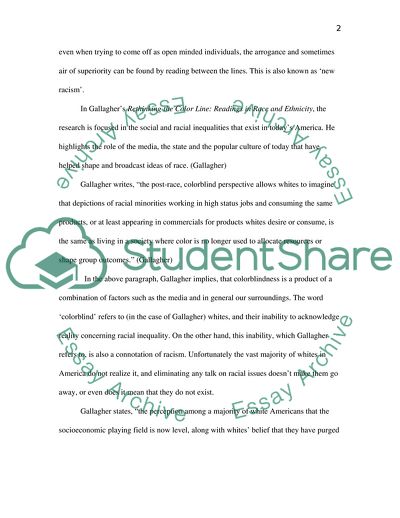Cite this document
(Colorblindness and the New Racism Essay Example | Topics and Well Written Essays - 1250 words, n.d.)
Colorblindness and the New Racism Essay Example | Topics and Well Written Essays - 1250 words. https://studentshare.org/sociology/1754626-final-paper
Colorblindness and the New Racism Essay Example | Topics and Well Written Essays - 1250 words. https://studentshare.org/sociology/1754626-final-paper
(Colorblindness and the New Racism Essay Example | Topics and Well Written Essays - 1250 Words)
Colorblindness and the New Racism Essay Example | Topics and Well Written Essays - 1250 Words. https://studentshare.org/sociology/1754626-final-paper.
Colorblindness and the New Racism Essay Example | Topics and Well Written Essays - 1250 Words. https://studentshare.org/sociology/1754626-final-paper.
“Colorblindness and the New Racism Essay Example | Topics and Well Written Essays - 1250 Words”. https://studentshare.org/sociology/1754626-final-paper.


